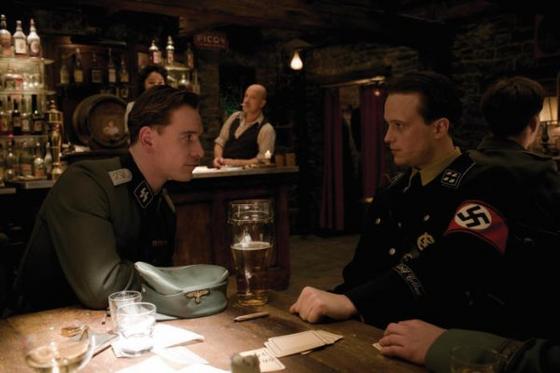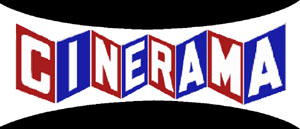Hateful Eight review [NO spoilers]
We saw Hateful Eight in 70mm splendor in a packed and enthusiastic theater last night. Totally worth seeing. The three hours went by quickly. But it was less ambitious, and less cinematic, than his recent work. In fact, it is basically a stage play. It’s as if Tarantino was given license to take one of his set pieces — say the phenomenal thirty minute German tavern scene (about the scene) in Inglorious Basterds — and blow it out to three hours, although to be fair it’s actually two or three of those set pieces.
The characters are colorful and well-etched. I loved watching the actors act, as in every Tarantino film. The dialogue is Tarantinesque, although not as memorable as his very best. The violence is explosive and over the top. (“Is it a spoiler to say that there’s violence in a Tarantino film?”Is it a spoiler to say that there’s violence in a Tarantino film?)
But it’s also a genre film in a very unexpected genre for Tarantino. I’d say what genre but I think that really might count as a spoiler. Let me put it like this: it’s as if you’re watching Pulp Fiction and realize that, what the heck?, it’s really a version of Emma. (And that was definitely not a spoiler for either film.) It’s sort of cool that Tarantino did this, but also a bit confining for him. At more than 3 hours and in 70mm Cinerama, this is in some ways a small film.
While seeing the “Cinerama” banner took me back, oh, fifty years, I can’t say that what he went through — and what he forced theaters to go through — to show it in 70mm was worth it. There are a couple of shots that that had me think “Nice 70mm!” but had I not known that it was in 70mm, I simply would have said, “Nice shot!.” There were a few shots where the color was especially rich and beautiful, but, again, I wouldn’t have attributed that to anything except excellent digital cinematography had I not known any better. On the other hand, I also can’t see any real difference between an ordinary Mac screen and a Retina display. I’m glad Quentin got to do it his way, and I hope it makes him happy.
“Then there’s the question of what it’s about”Then there’s the question of what it’s about. Race and racism? Legal justice and frontier justice? Yes, I think so. But it doesn’t have easy lessons. Tarantino is totally a non-didactic filmmaker, unlike, say, Spielberg. He’s got his values, he’s got his characters, he puts them together, one of them will discourse on an unexpected cultural theory, one person’s brain matter is probably going to end up in someone else’s face, and that’s about it.
Why would we expect there to be more? For two reasons. First, the movie-making is so superbly crafted. We are completely in his thrall. That’s the experience of art. Second, the violence is so extreme that we want it to be justified by significance.
But violence serves the role of humor in Tarantino’s films. I’m not saying it’s funny, although it often is, and last night’s enthusiastic audience burst out in laughter at some of it. Me too. Tarantino uses violence not just to advance the plot, and not, I believe to show us the true effects of violence, for he skimps entirely on the effect violence has on its survivors. Rather, the “violence like a sudden joke snaps the audience out of the comfort that narrative flow provides”violence like a sudden joke snaps the audience out of the comfort that narrative flow provides.
Which is to say that I don’t think Hateful Eight is rigorously about anything, except perhaps the everyday chaos engendered when people who are unalike have to share a space, or, in this case, share a movie — except in this case, the chaos is amplified by people with guns and their own loose-triggered codes of behavior.
TL;DR: Worth seeing because Tarantino.











